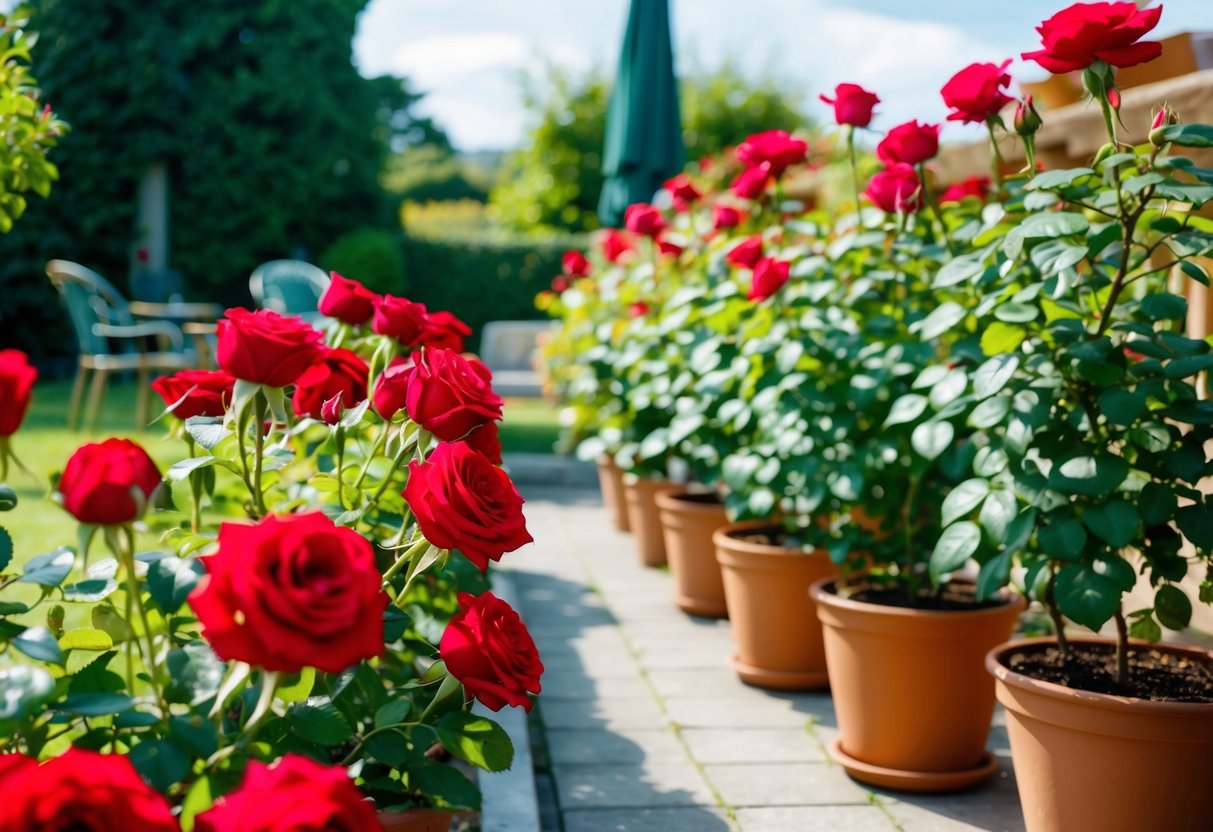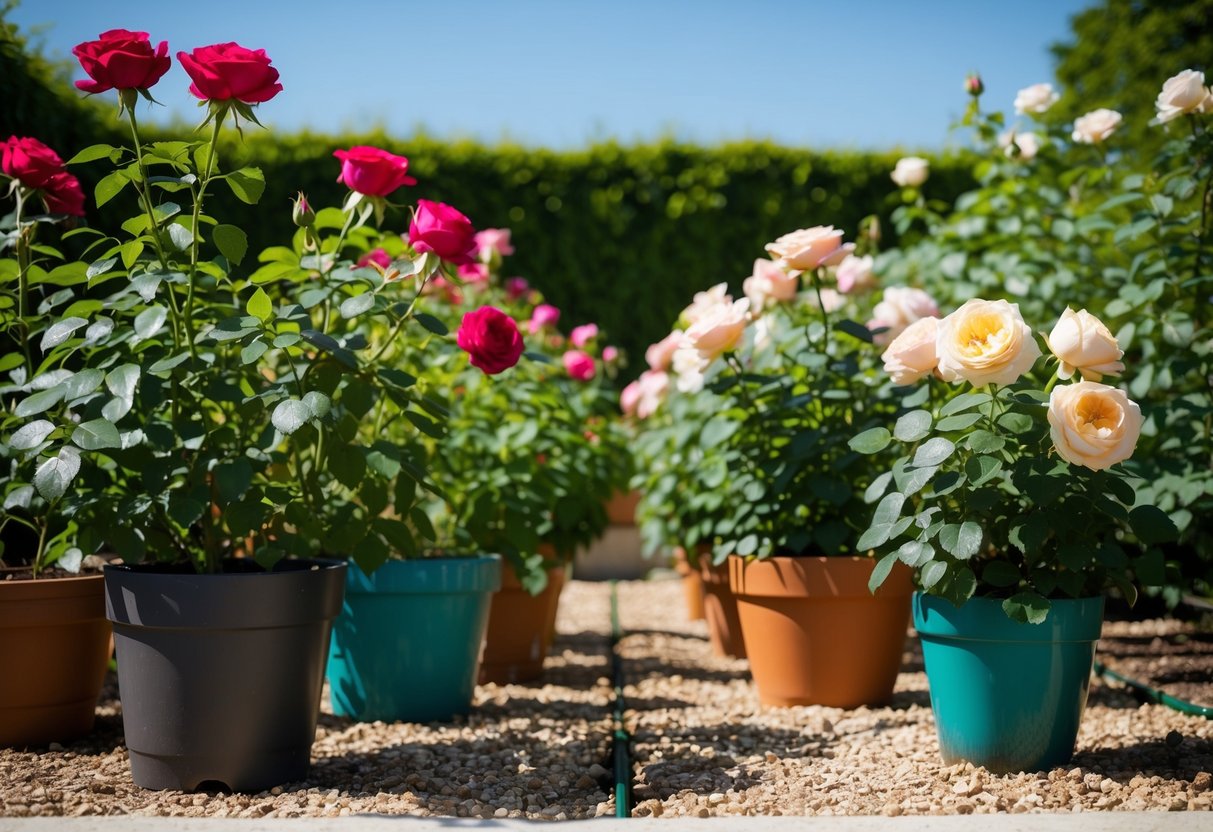Do Roses Grow Better in Pots or the Ground? Tips and Insights
Thinking about growing roses and wondering if you should use a pot or plant them in the ground? Each option has its perks and challenges. When you grow roses in pots, you can control many aspects, like soil quality and watering. This setup also allows you to move the plants around, chasing the sun or keeping them safe in bad weather. However, many find that roses planted directly in the ground often thrive better due to greater soil depth and natural drainage.

On the other hand, potted roses give you the chance to grow beautiful blooms even if your garden soil isn’t ideal. You can pick the perfect pot and soil mix to give your roses the best chance. Plus, you might find a wider range of beautiful rose varieties that can flourish in pots or containers. It’s a flexible option, especially if you’re short on space.
You’ll find that both methods allow for stunning displays of roses. Whether you choose to try growing roses in pots or planting them in the ground, the choice depends largely on your space, time, and preferences. This guide will dive into what each option offers, helping you pick the best for your situation.
Choosing the Right Location

Finding the best spot for your roses is essential for healthy growth. Sunshine and air circulation play a huge role in their development, while being aware of your region’s USDA zone helps you understand specific growing conditions.
Sunshine and Air Circulation
Your roses love sunshine. They need more than six hours of direct sunlight each day to thrive. If you’re choosing a spot, pick one that gets plenty of sunlight. Some rose varieties can grow in partial sun, which means three to six hours of sunlight. Make sure you know what type you have before planting.
Air circulation is just as important. Good airflow reduces the chances of diseases. Plant your roses with enough space around them so they aren’t crowded by other plants or structures. If air doesn’t move around them, moisture can build up, leading to fungal issues.
Keep these points in mind for healthy roses. If they are in a pot, move them to the best spots as the seasons change. This flexibility is a great benefit of container gardening.
USDA Zone Considerations
Understanding your USDA zone helps you know what climate your roses will face. Every region has a different zone, based on temperature. Roses vary in their hardiness, meaning some do better in cold places while others thrive in warmth.
Check what zone you’re in and select rose varieties suited for it. If you’re in a colder zone, choose hardy roses that can withstand frosty conditions. Warmer zones can support more delicate, exotic types.
Use this knowledge when planning your garden to make sure your roses bloom beautifully. You can adjust your care routine to suit the growing conditions of your specific USDA zone. Being mindful of this helps your roses reach their full potential.
Rose Varieties and Their Growth Habits

Choosing the right rose variety is crucial for successful growth. Different types of roses have unique growth habits that make them suitable for different conditions and spaces.
Shrub and Climbing Roses
Shrub roses are versatile and hardy. They usually grow between 3 to 6 feet tall, making them perfect for creating large, colorful displays. They can flourish in both pots and the ground, as long as there’s enough space for their roots to spread.
Climbing roses, on the other hand, need support like a trellis or fence to grow upwards. They can reach amazing heights, which might be over 10 feet. They are ideal for garden boundaries or against walls where they can display their beautiful blooms. Choosing the right support structure is key to helping them thrive and capture sunlight.
Patio and Miniature Roses
Patio roses are compact, growing about 18 to 24 inches, making them ideal for small spaces and containers. You can place them on patios, balconies, or terraces, where they add vibrant color and fragrance.
Miniature roses are even smaller, often less than 2 feet tall, and perfect for indoor pots or small garden plots. They require regular watering and sun exposure to maintain their blooms. These roses are easy to manage and can adapt well to indoor environments with proper care.
Hybrid Tea and Floribunda Roses
Hybrid tea roses are known for their large, elegant blooms. They typically grow 3 to 7 feet tall and are often used in cutting gardens for floral arrangements. These roses prefer well-drained soil and need lots of sunlight to thrive, making them more suited to the ground than pots.
Floribunda roses produce clusters of blooms and are slightly shorter, around 3 to 5 feet. They are less demanding than hybrid teas, making them easier to maintain for beginners. They work well in both pots and the ground, offering a lush, colorful display throughout the growing season. Proper care involves regular pruning and feeding to encourage blooming.
Planting Roses

When planting roses, choosing between the ground and pots depends on your space and care preferences. Each method has its advantages but requires different approaches to ensure healthy growth.
Ground Planting Procedures
To plant roses in the ground, select a sunny spot in your rose garden with well-draining soil. Begin by digging a hole twice as wide as the rose’s pot but only as deep as the root ball. This ensures that the roots have enough room to spread out.
Remove the rosebush from its container and gently tease out the roots, especially if they are circling. Position the plant in the hole so the crown is at soil level. Backfill the hole with soil, pressing it down firmly. Finally, water thoroughly to remove air pockets, which helps the roots settle into their new home.
Add a layer of mulch around the base to retain moisture and suppress weeds. Keep an eye on watering needs, especially during hot spells, to maintain soil moisture.
Potting and Repotting Tips
For potted roses, choose a large container with good drainage holes. A container that’s at least 18 inches wide and deep is ideal. Fill the pot with a quality potting mix, ensuring it’s well-aerated and rich in nutrients.
When potting your rose, place it so the crown is just above the soil surface. Fill in with potting mix and water it well. Ensure the pot remains in a sunny location and avoid over-watering by checking soil moisture regularly.
If your rose becomes root-bound, consider repotting. Gently remove the plant, prune any circling roots, and transfer it to a larger container. This encourages healthy growth and gives the roots more room to expand.
Keeping an eye on watering needs, especially during hot spells, helps maintain soil moisture while preventing root rot. Regular feeding with a balanced fertilizer will also support vigorous growth.
Optimal Care Strategies

To ensure your roses thrive whether they’re in pots or the ground, focus on proper watering, fertilizing, pruning, mulching, and protection from diseases and pests. These strategies can help maintain healthy growth and vibrant blooms.
Watering and Fertilizing Routine
Maintaining an appropriate watering schedule is crucial. Roses need a consistent supply of water, especially if they are potted. Drip irrigation can be beneficial to prevent over-watering.
Water potted roses more often since soil in pots dries out faster. Fertilizing roses regularly is also important. Utilize a balanced rose fertilizer every four to six weeks. This provides essential nutrients for growth and flowering.
Tip: Always water deeply to reach the root zone.
Pruning and Mulching Techniques
Pruning helps keep your roses healthy and encourages new growth. It involves cutting away dead or weak stems. Late winter or early spring is an ideal time for major pruning.
For mulching, use organic materials such as wood chips or shredded bark. This helps retain moisture and suppress weeds. Apply a layer about 2-3 inches thick around the base.
Mulching also provides nutrients as it breaks down.
Protection from Diseases and Pests
Roses can be susceptible to problems like powdery mildew. Good air circulation and proper sunlight exposure help minimize risk. Keep plants spaced out and well-ventilated.
Inspect regularly for pests such as aphids or spider mites. Natural solutions like neem oil or insecticidal soap can help control them.
Using a sterilized potting mix when growing roses in pots can reduce disease risks. Also, clean your gardening tools to avoid spreading infections.
Make sure the soil drains well to prevent root rot.
Additional Considerations for Container Roses

When growing roses in containers, it’s important to consider factors like proper drainage and protection during colder months. The choice of container, potting mix, and suitable plants for companion planting also play significant roles in the health of your roses.
Choosing Containers with Proper Drainage
Selecting the right container is crucial for your roses. Look for containers with adequate drainage holes. This prevents water from pooling at the bottom, which can lead to root rot. Containers made from materials like clay or ceramic work well because they allow for better airflow.
A well-draining potting mix is essential too. This ensures that excess water flows out, keeping the roots happy and healthy. You might consider adding bark mulch to the surface. This helps retain moisture and keeps the roots cool, especially during warmer months.
Proper container gardening can give your roses the environment they need to thrive.
Winter Protection and Companion Planting
Winter can be challenging for potted roses. To protect them, you can wrap the containers in burlap or move them to a sheltered spot like a garage. This offers the necessary winter protection against harsh temperatures.
For companion planting, choosing the right plants can enhance your roses’ growth. Marigolds, for instance, help repel pests. Herbs like lavender not only smell great but can also help deter insects. These companions create a balanced ecosystem around your roses, enhancing their beauty and health.
By considering these details, you can successfully enjoy container roses through every season.







